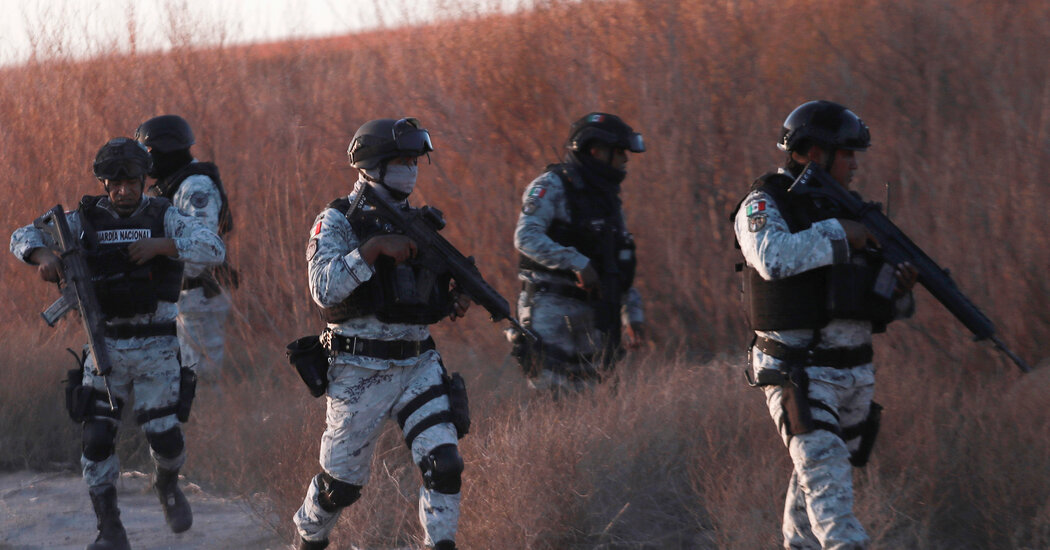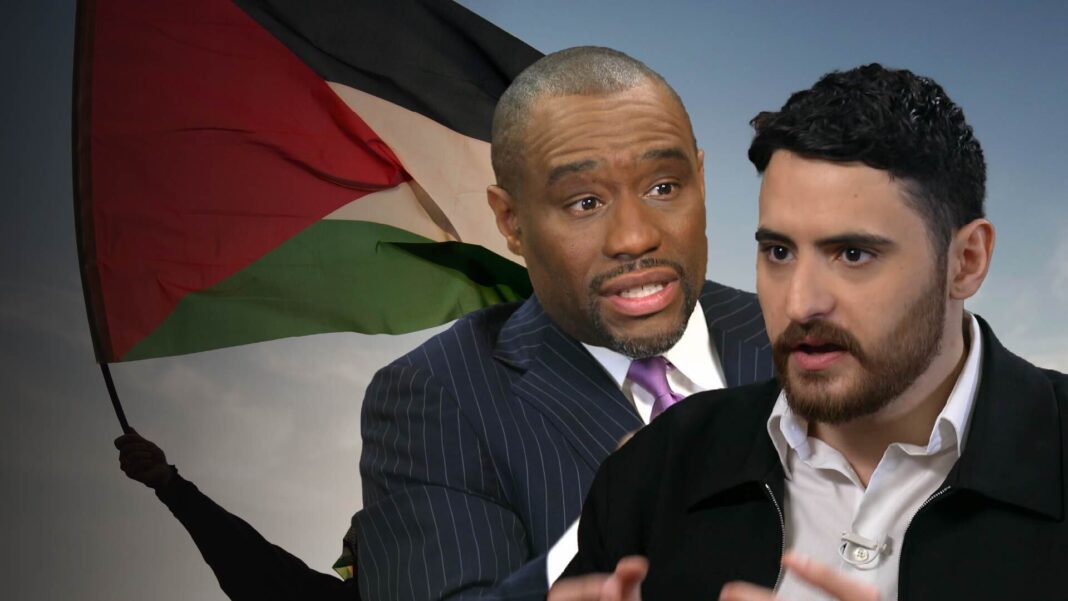During his latest presidential campaign, President Trump bragged about compelling Mexico to deploy 28,000 troops to its borders during his first administration to avoid tariffs.
This week, Mr. Trump and Mexico brokered another deal to send an additional 10,000 Mexican National Guard members to the border to stop the flow of migrants and drugs — a compromise to once again stave off U.S. tariffs. Mr. Trump has championed the agreement as a victory for the United States.
But analysts and former diplomats who brokered the first troop deployment in 2019 are doubtful that additional soldiers will have much effect thwarting the movement of migrants or drugs, particularly fentanyl.
Instead, they say, the deployment agreed to by President Claudia Sheinbaum of Mexico may be catering to Mr. Trump’s affinity for deal-making rather than being part of a well-thought-out military campaign.
“It’s a lot of shock and awe, but very little policy,” said Arturo Sarukhán, Mexico’s ambassador to Washington during President Felipe Calderón’s term from 2006 to 2012, an administration that aggressively pursued cartels inside Mexico, igniting extraordinary levels of violence nationwide.
The Mexican government appears to be echoing Mr. Trump’s fondness for a high-profile media blitz with its own.
After the deal was struck, photos and videos of Mexican soldiers waiting to board military flights and vehicles for their border deployment circulated widely. They mirrored Mr. Trump’s use of American military planes to deport migrants in recent weeks.
But what the Mexico troops will do on the border is unclear. The Mexican defense ministry is known for its lack of transparency, as it is not required to disclose its operations or funding details to Mexico’s congress or the public.
There are clues from Mr. Trump’s first term, when more than 20,000 Mexican troops were sent to the country’s northern and southern borders and were responsible for erecting checkpoints and breaking up large groups of migrants.
The Mexican defense ministry did not respond to questions about the deployment and Ms. Sheinbaum has so far said little about what exactly the force will be responsible for.
Mexico already has a significant military presence along the U.S. border. Sam Storr, a Mexico-based analyst who tracks military activity with the Citizen Security Project at the Ibero-American University, said that there was a monthly average of 1,115 National Guardsmen and 7,959 Mexican Army troops as part of immigration enforcement at the country’s northern border in the first half of 2024.
Adding 10,000 new National Guards members, Mr. Storr said, could “potentially be a significant increase,” but he also called it “extremely confusing.” He said it was not known if some troops would be rotated out. And, he said, based on public records requests, it is the Mexican Army that has traditionally carried out more drug seizures — and has a larger presence in northern states.
The National Guard, Mr. Storr said, “seems to be an auxiliary force,” filling gaps for state police and contributing to customs enforcement.
U.S. Border Patrol officials recorded roughly 71,000 illegal crossings at the end of Mr. Trump’s first term in December 2020. While crossings hit record highs under President Joseph R. Biden in 2023, they dropped to about 47,000 by December 2024.
The bigger question is what additional troops can do, if anything, to stanch the flow of fentanyl into the United States.
“It’s Whac-a-Mole,” said Mr. Sarukhan, the former ambassador. “Most of the fentanyl goes through legal points of entry into the U.S., not between them, and that’s where most troops will be deployed: at illegal points of entry.”
The challenge of fentanyl interception, analysts say, is threefold. First, fentanyl is compact, with only small quantities of the drug needed to get a lot of people high, unlike cocaine. It is much easier to smuggle into the United States in personal vehicles compared with other drugs. Mexican security forces do not search vehicles at U.S. ports of entry; that happens on the American side of the border.
Second, a majority of fentanyl smugglers are not illegal migrants, as Mr. Trump claims, but American citizens going through border crossings. In 2023, American citizens were responsible for 86 percent of fentanyl trafficking cases in the United States, according to government figures.
Third, although the National Guard is authorized to carry out inspections, significantly more soldiers would be required to effectively inspect the volume of vehicles, which would likely slow down bilateral trade between the United States and Mexico. In 2018, the port of entry at Laredo, Texas — where most trade flows — saw more than five million cars and 2.3 million trucks cross, carrying goods worth about $235 billion.
“Militarizing drug enforcement is nothing new,” said Stephanie Brewer, the Mexico director at the Washington Office on Latin America research institute. “If anything, this is doubling down on a failed war on drugs that has done nothing to stop drugs since it began decades ago.”
Analysts say that to crack down on fentanyl more intelligence is needed to go after labs or to identify American citizens who are smuggling it. The Mexican National Guard is a relatively new force and only established its own intelligence wing in late 2023.
Intelligence “is really the most effective tool, beyond 10,000, 15,000 or 20,000 National Guard members,” said Jonathan Maza, a Mexico-based security analyst. He said that increased cooperation between Mexican authorities and U.S. agencies — such as the Drug Enforcement Administration; the Bureau of Alcohol, Tobacco, Firearms and Explosives; and the F.B.I. — was crucial.
But that work needs to be done elsewhere, not at the crossings.
“Fentanyl production is happening not on the border, but in the hinterlands,” said Falko Ernst, a security analyst in Mexico.
“These are transnational organized crime networks that use both U.S. and Mexican territory,” he added. “What is needed is a transnational solution.”
The Mexican government announced that the 10,000 National Guard members would be stationed in 18 cities and towns along the U.S.-Mexico border, with the largest contingents deployed to Tijuana and Ciudad Juárez.
Troops began being redirected to the north on Tuesday from southeastern Mexico, one of the safest regions in the country and a popular tourist destination. Others were pulled from states that have seen a recent decrease in crime rates.
“The plan that was made does not obviously put security at risk in the rest of the territory,” Ms. Sheinbaum said on Wednesday.
Inspector General José Luis Santos Iza, the coordinator of the 31st Battalion of the National Guard based in Ciudad Juárez, said there would be “permanent surveillance” of the border and all routes leading to it, with troops patrolling on foot and in vehicles.
Mayor Juan Francisco Gim Nogales of Nogales, a city bordering Arizona, said Wednesday that he was waiting for 400 troops to be deployed later that day.
He expressed hope that the additional forces would help tackle the organized crime operating in his city and curb the flow of guns entering Mexico. The deployment would double Nogales’s armed forces from some 350 to 700, Mr. Gim Nogales said.
“It’ll give citizens peace of mind,” he said.
Emiliano Rodríguez Mega contributed reporting from Mexico City, Rocío Gallegos from Ciudad Juárez, Aline Corpus from Tijuana and Chantal Flores from Monterrey, Mexico.


